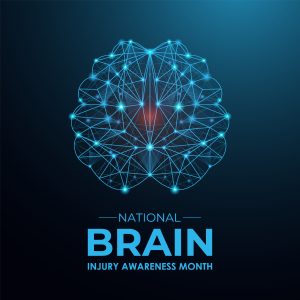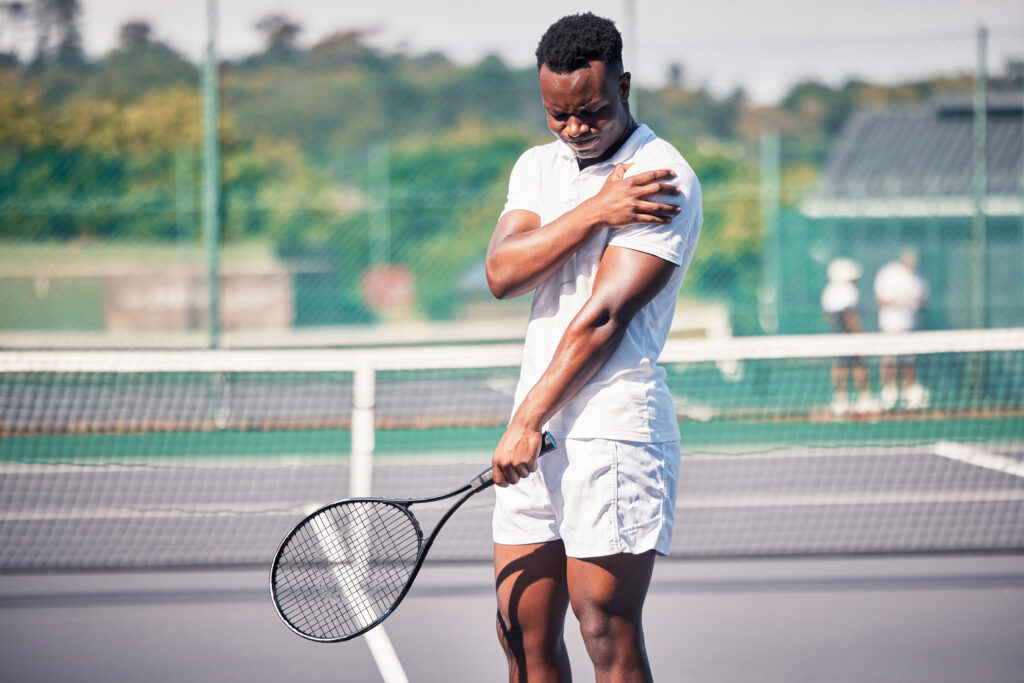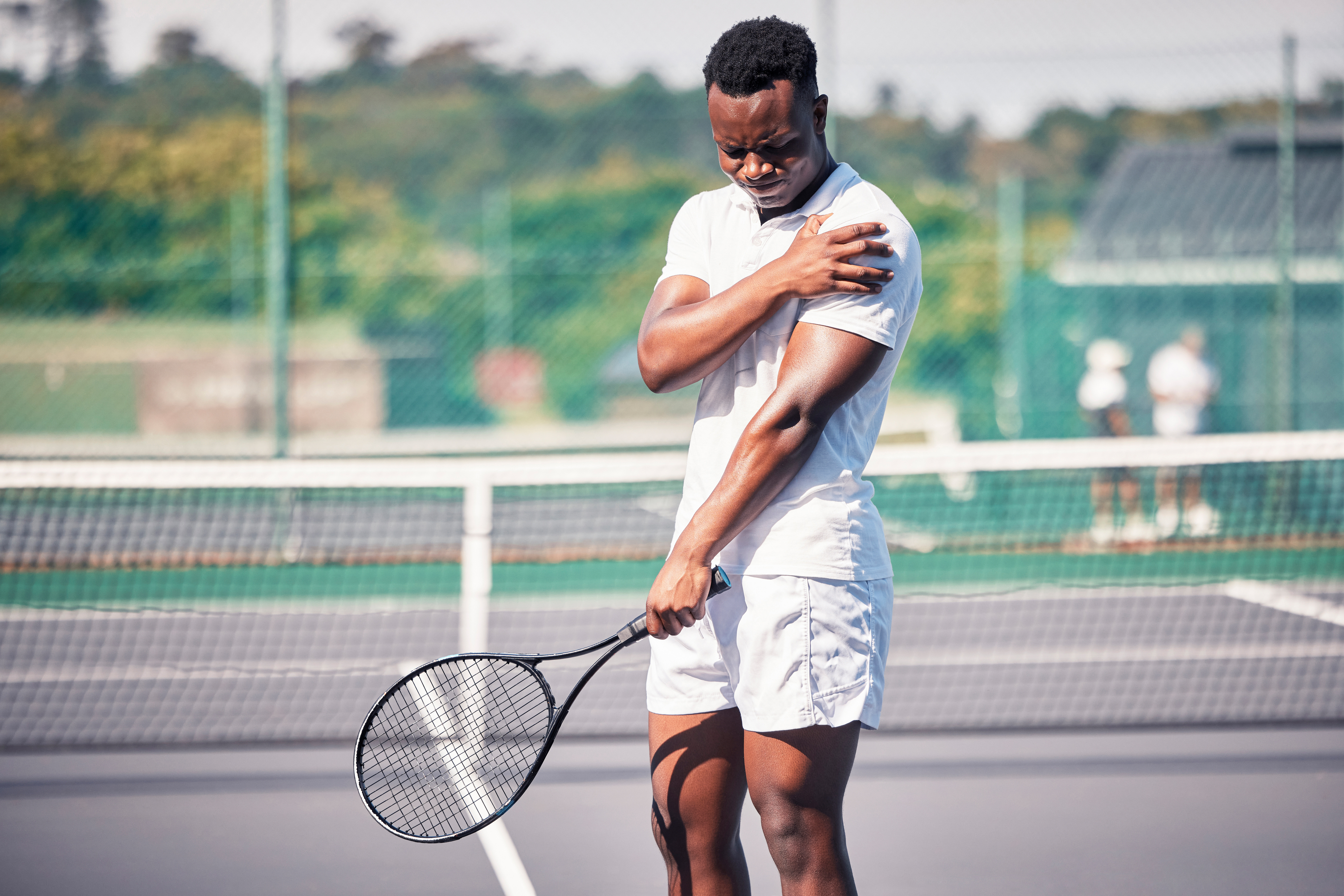March is Brain Injury Awareness Month when we help raise awareness around the full spectrum of brain injuries, from mild concussions to severe traumatic brain injuries (TBIs).

Each year, millions of people experience some type of brain injury and begin their journey to recovery. This month serves as an opportunity to provide education, support and raise awareness for those impacted.
The Impact of Brain Injury on Musculoskeletal Health
According to the Centers for Disease Control and Prevention (CDC), most brain injuries are considered mild, including most concussions. However, even these mild injuries can still be considered serious and can pose challenges in learning, memory, concentration and problem-solving. Many brain injuries can result from several causes, most commonly falls, motor vehicle crashes and sports.
While these injuries can lead to significant cognitive and neurological effects, they may also impact musculoskeletal (MSK) health. Understanding the effect that a brain injury can have on MSK health is important as it can lead to a more comprehensive approach to recovery.
The Connection Between Brain Injury and Musculoskeletal Health
Musculoskeletal health refers to the bones, muscles, ligaments, tendons and other tissues in our bodies. Brain injuries, especially moderate to severe ones, can disrupt the communication between the brain and body, which impairs the ability to control movement, maintain posture and perform physical tasks.
Common Impacts of:
- Muscle Weakness and Atrophy: One of the most common consequences of brain injury is muscle weakness, which occurs when the brain is unable to properly signal the muscles to contract and function. This can lead to the wasting and gradual loss of muscle mass over time, especially in the arms, legs and core. The loss of muscle mass can occur because of muscle disuse, aging or illness. Without proper motor control, affected individuals may struggle to maintain normal movement patterns, increasing the risk of further injury.
- Impaired Balance and Coordination: Brain injuries often affect the cerebellum or other areas responsible for motor coordination and balance. This can result in difficulties with walking, standing or performing daily activities. Impaired balance puts individuals at a higher risk of falls and injuries, which in turn can cause further damage to the musculoskeletal system, such as fractures or sprains.
- Posture: When the brain is unable to communicate effectively with the muscles that control posture, individuals with brain injuries may find it difficult to maintain an upright position. Having poor posture can put an additional strain on the spine, neck, and other joints, causing pain, discomfort, or potentially long-term musculoskeletal conditions like scoliosis or degenerative joint disease.
- Joint and Soft Tissue Pain: Chronic pain, particularly in the neck, back and limbs is common for individuals with brain injuries. Muscles that are weakened or imbalanced due to a brain injury can place added stress on joints and soft tissues leading to inflammation, stiffness and discomfort.
- Spasticity and Muscle Tightness: Spasticity is a condition that causes muscles to become stiff and tight, making it difficult to move. Brain trauma can disrupt the pathways between the brain and muscles which can result in uncontrolled muscle tightening and stiffness. This condition can further impact musculoskeletal issues by limiting the range of motion and putting more strain on muscles, joints and tendons.
Rehab for Brain Injury and Musculoskeletal Health
Given the connection between brain injury and musculoskeletal health, rehab efforts should be comprehensive and specialized. Treatment plans that focus only on the brain injury without also addressing MSK health can lead to prolonged recovery times and incomplete healing.
Here’s how a holistic approach can improve outcomes:
- Physical Therapy: Physical therapy is typically suggested as a method to treat a brain injury, especially when it comes to restoring muscle strength and joint mobility. A skilled physical therapist can create a customized exercise program that targets specific weaknesses and retrains the body to move properly. Strengthening the core, improving posture and working on joint stability can also prevent further MSK damage and improve overall function.
- Occupational Therapy: Occupational therapy can help individuals with brain injuries regain independence in performing daily activities. It focuses on improving fine motor skills, hand-eye coordination and posture. Occupational therapists may also use assistive devices and adaptive strategies to help individuals perform tasks like dressing and eating.
- Spasticity Management: For individuals who develop spasticity due to brain injury, specialized treatments such as stretching, medication and sometimes even surgical interventions like tendon lengthening may be necessary to reduce tightness and improve range of motion. Spasticity management is crucial to prevent deformities in patients and to ensure mobility is maintained.
- Pain Management: Pain management strategies can include heat or cold therapies and pharmacological treatments such as anti-inflammatory medications. These can help individuals cope with chronic musculoskeletal pain after a brain injury.
Preventing Further Injuries and Promoting Recovery
In addition to rehab, there are several ways individuals with brain injuries can protect their musculoskeletal health. Engaging in regular exercise, creating a safe living environment and maintaining a healthy diet can help improve muscle tone, coordination and overall musculoskeletal health while minimizing the risk of falls and injuries.
While the effects of brain injury can be wide-ranging, understanding the impact on the musculoskeletal system can lead to an effective treatment plan. With appropriate therapy, pain management and lifestyle adjustments, individuals recovering from a brain injury can regain mobility, independence and an improved quality of life.
Additionally, by prioritizing both brain and musculoskeletal factors, healthcare providers can help their patients navigate the challenges of a brain injury.
Photo Credit: Adobe


